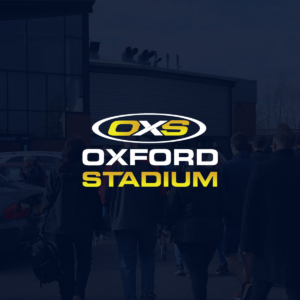Greyhounds have been observed to express great enthusiasm for racing. But there are other factors that contribute to this phenomenon, which we will explain later in the article.
The Basic Instincts of a Greyhound
Greyhounds are sighthounds, a category of dogs known for their keen vision and extraordinary speed. Centuries of selective breeding for hunting and coursing have honed these characteristics.
The Greyhound’s Love for Speed
Greyhounds have a natural predisposition for sprinting, largely due to their physical characteristics:
- Speed: They are one of the fastest breeds, achieving speeds up to 45 miles per hour.
- Physique: A Greyhound’s slim, flexible spine and deep chest aid in its sprinting capabilities.
- Endorphins: Like humans, dogs have endorphin releases during physical activity. This ‘runner’s high’ can be an enjoyable feeling for them.
Predatory Instincts
In the wild, a Greyhound’s survival would have depended on its skills as a hunter. While domestication has removed this necessity, the predatory instinct remains. Chasing a lure on a track satiates this innate urge to chase.
Quality Racing Environments Enhance Enjoyment
When the tracks are maintained in good conditions and the racing is controlled, not forced, Greyhounds show noticeable enthusiasm. It’s crucial to understand that their active participation is voluntary.
- Good Living Conditions: When Greyhounds are well taken care of, regularly exercised, and mentally stimulated, they are likely to enjoy the sport.
- Ethical training: Methods that use positive reinforcement, rather than compulsion, yield eager racers.
Post-racing Life: A New Chapter, not an End
Greyhounds retire relatively early, often by the age of five. This phase is more of a new beginning rather than the end of their lives:
- Adaptation: Greyhounds generally adapt well to a more sedate lifestyle post-retirement, showing that their previous enjoyment of racing did not compromise their ability to enjoy a relaxed lifestyle.
- Longevity: Greyhounds live long, fulfilling lives post retirement, a strong indication of their overall physical and mental health.
Theoretical Perspectives: Experts Weigh In
Many experts conclude that greyhounds do indeed enjoy racing:
- Behavioral scientists: These experts observe the voluntary nature of a Greyhound’s participation in racing. Choosing to run when given an option is a strong indicator of enjoyment.
- Professional trainers: Persons accustomed to working with Greyhounds affirm the breed’s enthusiastic engagement in racing.
It’s the intense, natural love for running and chasing, coupled with properly maintained racing environments and ethical practices, that make Greyhounds love racing. While every dog is an individual with unique needs and preferences, the breed’s inherent traits and typical behavior strongly suggest that Greyhounds enjoy, perhaps even love, to race.
Greyhound’s Physical Excellence
The physical traits of Greyhounds contribute significantly to their enjoyment of racing. Their physical excellence is a combination of several factors:
- Aerodynamic Body: Greyhounds have a unique, streamlined body that reduces air resistance when they run.
- Light Skeleton: Their light bone structure reduces the impact on joints during high-speed runs.
- Deep Chest: A large chest cavity provides greater lung capacity, enhancing their ability to maintain speed over distances.
- Muscular Build: Their muscular body is designed for power and speed.
In other words, the Greyhound breed possesses the ideal physical traits for racing, which play a significant role in their enjoyment of the sport.
Greyhound’s Racing Behavior
Often, signs of enjoyment in dogs include a wagging tail, an excited demeanor, and an obvious engagement in activities. When it comes to Greyhound racing, several behaviors indicate their excitement and pleasure:
- Pre-race Anticipation: Many Greyhounds exhibit signs of anticipation such as wagging their tails, jumping, and barking before a race, indicating their eagerness to run.
- Sprint Start: They initiate the race from a stationary position to a full sprint – a clear demonstration of enthusiasm.
- Post-race Behavior: After a race, many Greyhounds display behavior indicative of satisfaction like an adrenaline rush, such as prancing or taking victory laps.
GAN Racing, one of the more prominent Greyhound racing associations, provides an insight into Greyhound’s racing behaviors. Here’s a breakdown of their observations:
| Greyhound Behavior | Occurrence During Racing | Interpretation |
|---|---|---|
| Tail Wagging | High frequency pre, during and post | Excitement and enjoyment |
| Eager Body Language | High frequency pre-race | Eagerness to race |
| Sprint Start | Almost always seen | Enthusiasm for racing |
| Joyous Post-race Behavior | Frequently observed | Satisfaction from the race |
The Greyhound Community’s Standpoint
Greyhound owners and trainers usually agree that Greyhounds enjoy racing, driven by instinct and their natural ability. Their opinions are generally based on personal experiences and long-term observations:
- Racers’ Opinion: Those who race their Greyhounds report that their dogs become visibly excited when they see a racing lure or when they realize that they are going for a run.
- Owners’ Observation: Many Greyhound owners testify that their dogs, even those retired from racing, still show desire to chase, run, and compete against other dogs in informal settings.
The Greyhound community’s viewpoint, coupled with the breed’s notably keen interest in chasing and its physical adaptations for racing, provides a strong argument for the belief that Greyhounds genuinely enjoy racing.
Factors Influencing Greyhounds’ Racing Enjoyment
A racing Greyhound’s affinity for the sport is directly influenced by the environment and conditions they are exposed to. Key aspects having an impact on their enjoyment include:
- Breeding: Responsibly bred Greyhounds have better overall health, both physical and mental, increasing their enjoyment of racing.
- Socialization: Proper interaction with other dogs and humans is crucial in fostering a positive atmosphere for racing.
- Proper Nutrition: A balanced and nutritious diet supports the optimal health of racing Greyhounds, which in turn enables them to enjoy racing.
- Physical Fitness: Conditioning and exercise regimens tailored to the individual Greyhound will ensure they derive maximum pleasure from racing.
- Medical Care: Regular veterinary check-ups and prompt treatment of any health issues contribute to a Greyhound’s racing enjoyment by ensuring they are in good health.
A proper racing setup considers the following factors:
| Factor | Ideal Condition | Impact on Enjoyment |
|---|---|---|
| Breeding | Responsible breeding practices focus on health and temperament. | High |
| Socialization | Positive interaction with other dogs and humans. | High |
| Nutrition | Balanced, high-quality diet tailored to individual needs. | High |
| Physical Fitness | Exercise regimens designed for the specific Greyhound. | High |
| Medical Care | Regular veterinary check-ups and timely treatment of health issues. | High |
The Importance of Lure Coursing
Lure coursing is a sport that simulates live prey chasing, which inherently appeals to Greyhounds. This form of racing greatly contributes to a Greyhound’s enjoyment of racing in general, due to:
- Variety in Racing: The irregular and unpredictable movements of the lure stimulate a Greyhound’s prey drive and heighten their enjoyment.
- Competitive Drive: A Greyhound’s competitive nature is ignited when racing against other dogs on the course.
- Adaptability: Greyhounds are highly versatile and adapt quickly to different course layouts, keeping their racing experience stimulating and enjoyable.
To summarize, lure coursing offers Greyhounds an opportunity to engage in an exciting and unpredictable form of racing, making it a notable contributor to their love of the sport.
Retired Greyhounds Indicating Enjoyment of Racing
Greyhounds often display behaviors after retiring from professional racing that indicate they enjoyed racing:
- Ongoing Chase Drive: Retired racing Greyhounds often demonstrate a persistent love for chasing, whether it’s toys, balls, or even other animals.
- Participating in Recreational Racing: Many owners of retired Greyhounds enjoy organizing or participating in occasional, informal races, where the dogs still show remarkable enthusiasm for the activity.
- Continued Fitness: The need to run and maintain physical fitness remains with Greyhounds throughout their lives, supporting the notion that they enjoy racing.
These observations of retired Greyhounds further emphasize that they genuinely enjoy racing and that their passion carries over into their post-racing lives.




